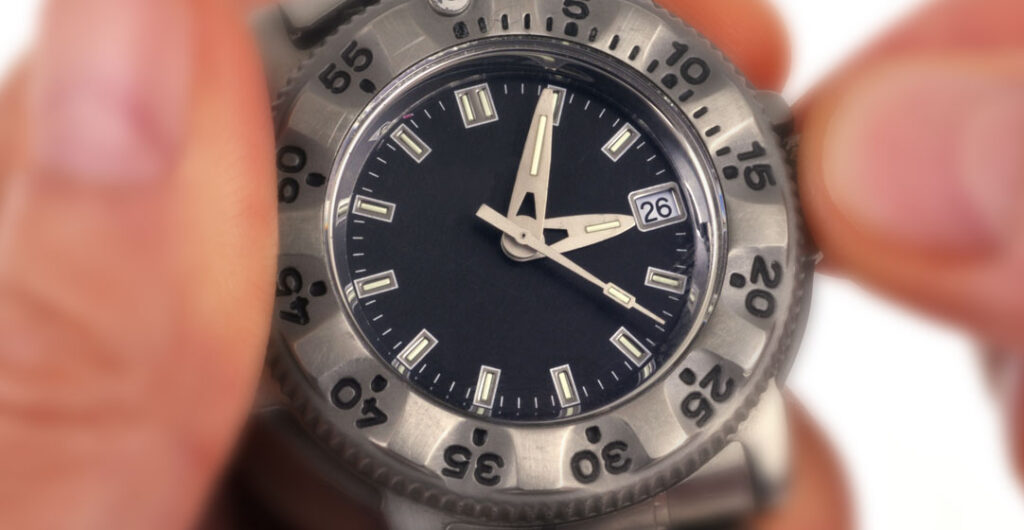Manage jet lag with these strategies from a nurse and former flight attendant
By Kimberly Madison, MS, RN
If you’ve ever traveled on a long-haul flight, you may know how jet lag symptoms can interrupt your vacation. You have plans to do some exploring when you arrive at your destination, but exhaustion sets in. And, you have difficulty staying awake during the day and trouble sleeping at night. Keep reading to learn more about what causes jet lag and action steps you can take to accelerate your recovery time.
What causes jet lag?
Jet lag is a sleep disorder resulting from traveling across several time zones on an airplane, when your waking and sleeping hours don’t coincide with the local time at your destination. (Unlike travel by train, boat or cruise ship, the speed of airplane travel and resulting change in time zone is fast.)

A flight across multiple time zones disrupts circadian rhythms — the body’s 24-hour clock — that control our bodily processes. Flights can affect digestion, body temperature and sleep/wake cycles. These internal biological cycles tell our bodies when to wake during daylight hours and when to sleep at night.
Multiple factors can affect the severity of jet lag symptoms. For example, the direction and distance you travel can influence your symptoms. A flight traveling eastward results in lost hours, and you may feel the physical effects of that lost time as fatigue. Conversely, you gain hours when you travel west without feeling jet lag.
Additionally, ultra-long-haul or international flights can impact your experience with jet lag. The dry recycled air and lower oxygen levels in the cabin can make you feel fatigued during your journey.
Other factors, such as age and underlying health conditions, can also affect how a person experiences jet lag. For example, children and older adults may have jet lag symptoms lasting for several days.
AAA Travel Tip: Travel insurance is a must when traveling abroad. Click here to buy travel insurance with AAA Washington’s partner Allianz Travel.
Common symptoms of jet lag
Jet lag throws off biological systems that regulate digestion, mood, body temperature, and thinking. As a result, it can cause a range of symptoms.
For example, the most common symptom of jet lag is fatigue, but a person may also experience nausea and headaches. Below are some common jet lag symptoms. But, of course, not every person who travels on long-haul flights will experience every symptom after every flight.
- Daytime exhaustion
- Changes in mood
- Difficulty concentrating
- Impaired performance
- Trouble with digestion
- Constipation
- Nausea
- Poor appetite
- Poor or fragmented sleep
- Irritability
- Headache
Symptoms in older adults, small children, or people with underlying health issues like type 2 diabetes may last longer and are often more severe.
AAA Travel Tip: AAA Travel can help you plan an unforgettable trip. Click here to chat with a travel advisor to explore exciting options for you next international vacation.
Strategies to prevent or reduce the effects of jet lag

Fortunately, you can take steps to mitigate the effects of jet lag or prevent them altogether. As previously mentioned, a disruption in the circadian rhythm causes the effects of jet lag. You can potentially shift your body’s cycle with light exposure, melatonin, and physical exercise.
A 2020 study from The Journal of Biological and Medical Rhythm Research shows that people who took specific measures before, during, and after long flights could reduce symptoms. In addition, some participants could prevent symptoms altogether. The following includes some strategies you can use at different phases of your trip to reduce the effects of jet lag.
Before your flight
Planning your journey can help your family stay healthy. AAA Washington Travel advisors can save you time and stress while organizing your dream vacation and offer expert insights into planning and logistics. Moreover, getting travel insurance can save money and headaches if you or a loved one becomes ill while away from home.
Traveling eastbound
If you’re traveling eastbound, set your bedtime a few hours later than usual. For example, if you’re traveling from Seattle to London and your regular bedtime is 10 p.m., try to stay up at least two to three hours later, a few days before your trip. Going to sleep a bit later will help you acclimate to the local time at your destination before you even begin your journey. You can adjust the number of hours depending on how far away you travel from your home time zone. Eastward travel is usually worse than westward because you lose hours of your day.
AAA Travel Tip: Before any international vacation, it’s a good idea to get some local currency. AAA Washington can help. You can order foreign currency at any AAA Washington store. The fee is $5 for AAA members and $20 for nonmembers.
During your flight
The air on a plane is dry, so if you’re in flight for several hours, you can quickly become dehydrated. Drinking enough water on the plane to combat dehydration is crucial. Aim to drink a cup of water each waking hour. Certain foods and beverages can also contribute to dehydration. You can try the following suggestions while on the airplane to stave off jet lag symptoms:
- If you can, refrain from salty snacks, caffeinated beverages, and alcohol.
- Consume smaller meals to help with digestion.
- Wear compression stockings and get up to walk around the cabin to help with circulation.
- Use relaxation techniques, such as meditation and breathwork, to help reduce stress.

After your flight
Once you’ve reached your destination, adapt your eating and sleeping schedule to the local time.
Jet lag interrupts your circadian rhythm, but you can shift your waking and sleeping schedule by creating artificial sunlight. This is because light exposure mimics the effects of sunlight and creates wakefulness. Besides changing your bedtime, light therapy can help you acclimate to the local time zone. A study from Scientific American reports that three days of bright light exposure in the morning can shift circadian rhythms by up to two hours.
Plus, a melatonin supplement can help if you have a sleep problem. But be sure to talk to your healthcare provider about using the supplement because melatonin can interfere with other medications. (In the U.S., melatonin is readily available over-the-counter, but it’s often not available for purchase in other countries.)
Most hotels have blackout curtains, so if you stay in a hotel and must sleep during daylight hours, you can use the curtains to keep the light out. A darkened room can help you fall asleep. Face masks will also shield your eyes from light in your environment.
Tips to help your body recover more quickly from jet lag
While not fully understood, some people don’t experience jet lag at all. This is possibly due to a genetic disposition or simply getting enough sleep while traveling.
For those who do experience jet lag, it usually presents within the first two days of arrival. (It’s best to know your destination’s time difference before booking your trip with a AAA Washington Travel advisor, so you can plan accordingly.) You can also download a jet lag app to help manage your sleep while away from home.

It’s not uncommon to have nausea or associated stomach issues from local food in addition to jet lag symptoms, so having a jet lag nausea treatment on hand is a great idea for stomach issues.
Here are a few helpful tips for recovering from jet lag:
- Avoid busy activities or events when you land.
- Use a jet lag app.
- Exercise.
- Consider drinking a caffeinated beverage such as coffee and tea to prevent daytime sleepiness.
- Practice good sleep hygiene.
- Stay hydrated.
- Use light therapy.
- Take melatonin or other medications for sleep (check with your doctor first).
Jet lag recovery period
Fortunately, jet lag is not permanent. Yet, the speed of your recovery depends on a few circumstances. Typically, the symptoms of jet lag last a few days in healthy individuals. If you’re traveling with grandparents or kids, remember that older adults and children may experience jet lag longer. In addition, people with underlying health conditions, such as diabetes, may experience prolonged symptoms.
The direction and distance of travel can also impact the recovery period. For example, eastward travel is more challenging than westward because you lose hours. But, if you’re traveling to Asia or Australia from the U.S., you may find it takes even longer to recover because of the flipped day-night cycle.

AAA Travel Tip: Planning on driving during your international vacation? You may need an International Driver’s Permit — sometimes called an international driver’s license. Click here to learn how to get an IDP at a AAA Washington store.
Final thoughts
Jet lag and nursing shift work have much in common. Both interrupt the natural balance of sleep/wake cycles. Acclimating to working an overnight schedule takes some time, but it’s possible. As a nurse who worked the graveyard shift for several years, the following strategies helped decrease fatigue and sleep deprivation, which is common among shift workers.
Good sleep hygiene is the key. These tips will help you combat the effects of jet lag, too.
- Go to bed at the same time each day, even on your days off.
- Avoid snacking in between meals and stick to a meal schedule.
- Avoid eating before you go to sleep.
- Turn off electronics.
- Avoid coffee and other caffeinated beverages several hours before bedtime.
- Keep your sleep environment dark and cool.
- Take a hot shower before going to bed.
Journeying to far-flung destinations is exciting. Unfortunately, jet lag can dampen your vacation, causing you to lose precious time. But, depending on the circumstances and by planning ahead, you can combat or even prevent jet lag before stepping on the airplane.
—Written by Kimberly Madison, MS, RN. Madison is a freelance health content writer and former flight attendant for a major U.S. airline.
—Top photo: AdobeStock
References
- Appelo, Jurgen. (2017, August 13). I Never Suffer from Jet Lag. Medium.
- Centers for Disease Control and Prevention. (2023, May 1). Jet Lag: CDC Yellow Book 2024.
- Chronobiology International, 37(11), 1621–1628. (2020). How do travelers manage jetlag and travel fatigue? A survey of passengers on long-haul flights.
- Centers for Disease Control and Prevention. (2022, October 6). Jet Lag.
- Travel Medicine and Infectious Disease. Jetlag related sleep problems and their management: A review. , 24, 59–64.
- Costanza, M. (2021, December 8). Why do some people get jet lag and others don’t?. University of Pittsburgh.
- Eastman, C. I., & Burgess, H. J. (2009). How to Travel the World Without Jet Lag. Sleep Medicine Clinics, 4(2), 241–255.
- Herxheimer, A., & Petrie, K. J. (2002). Melatonin for the prevention and treatment of jet lag. The Cochrane Library, 2010(1).
- The International Society of Travel Medicine (n.d.). Online Clinical Directory.
- Mason, I. C., Qian, J., Adler, G. K., & Scheer, F. A. (2020). Impact of circadian disruption on glucose metabolism: implications for type 2 diabetes. Diabetologia, 63(3), 462–472.
- Olson, J. (2013, January 1). How to Prevent Jet Lag. Scientific American.

Travel Planning Tips
Get expert advice: Your perfect getaway awaits. No matter what destination you choose, or how you wish to travel, AAA Travel experts can help you plan a perfect experience that you will remember for years to come.
Purchase travel insurance: Protect your trip investment with travel insurance.
Consider Concierge: AAA’s Concierge Vacations feature done-for-you details and special amenities for travel to world-wide destinations. AAA Travel Agents will make your planning a breeze and your vacation unforgettable.
On the road: Get ready for every trip with a AAA Membership. Get peace-of-mind on the road and much more.
Save with discounts: AAA membership gives you access to exclusive discounts nationwide.









